

JUMBO JOURNEY
HOHENWALD’S ELEPHANT SANCTUARY
Sourdough Success | DIY Energy Tips

Sissy,

The Elephant Sanctuary in Lewis County offers safety and space for the giants to peacefully live out their days.
Tennessee’s Agricultural Fairs
The start of summer signals the beginning of fair season. Find your local county and regional events.
Shutterbug Call for Entries
We’re partnering with the Wilson County-Tennessee State Fair to co-host photography contests honoring Tennessee and spotlighting the fair’s feature agricultural commodity.
Adorno Sourdough is a growing Claiborne County business breaking bread with friends and community.
Natural beauty abounds at North Chickamauga Creek Gorge State Park.
4 Between the Lines
Local leadership lets you know what’s happening at the co-op.
6 Tennessee Today by Mike Knotts
e latest from a statewide perspective.
8 From the Editor by Chris Kirk
A brief, friendly introduction to the current issue.
42 Point of View by Robin Conover
Peer through the view nder with an award-winning photographer.

10 My Tennessee Notebook by Antsy McClain

Here’s what’s happening across the state this month and beyond.
Co-op News
Information from your electric cooperative or electric membership corporation. 26 Home Energy Q&A by Brad Wagner
Balance comfort and energy costs with these do-it-yourself tips.
32 Tennessee History for Kids by Bill Carey
Vanderbilt University is tearing down a dorm named a er its founder.
36 A Taste of Tennessee
It’s June, and you’re on the go. Try these travel-ready treats.
40 Community Corner
Check out Artist’s Palette, and see our Find the Flag winners.


Celebrating the Extraordinary Nature of Everyday Life
Official publication of the Tennessee Electric Cooperative Association
Executive, editorial and advertising offices: 2964 Sidco Drive, P.O. Box 100912 Nashville, TN 37204
Phone: 615-367-9284
Email: thetennmag@tnelectric.org
General Manager Mike Knotts mknotts@tnelectric.org
Vice President of Communications Trent Scott tscott@tnelectric.org
Editor Chris Kirk ckirk@tnelectric.org
Field Editor and Senior Communications Specialist Nicole Christensen nchristensen@tnelectric.org
Writer and Content Creator Amber Weaver aweaver@tnelectric.org
Communications Support Specialist LaQuella Bond lbond@tnelectric.org
Advertising inquiries
American MainStreet Publications 611 S. Congress Ave., Suite 504 Austin, TX 78704 Phone: 800-626-1181
Website: amp.coop
The Tennessee Magazine is the official publication of Tennessee Electric Cooperative Association and its member electric cooperatives. It is published and distributed monthly to communicate electrical use and safety, economic development and educational and community interests of more than 1 million Tennessee families and businesses who own, operate and control the tax-paying, business-managed, locally owned electrical distribution and service systems of the Tennessee Electric Cooperative Association. Copyright 2025. All rights reserved. Reproduction in whole or in part without written permission is prohibited.
Subscriber services To order a subscription or change your address, write to The Tennessee Magazine, P.O. Box 100912, Nashville, TN 37224. Cost of subscription for members of participating electric cooperatives is $3.90 per

Quick Look
Tennessee Events
Page 18 and tnmagazine.org
Special events and other fun happenings abound across the state.
Shutterbug
Photography Contest
Page 19 and tnmagazine.org
We’re showcasing “95 Reasons to Celebrate Tennessee” with the Wilson County-Tennessee State Fair. Entries are due Tuesday, July 15.
Our e-Newsletter tnmagazine.org/enewsletter
Subscribe to our monthly e-newsletter to receive the latest stories, contests, recipes and more.
Between the Lines
Dan Rodamaker | Board President Tennessee Electric Cooperative Association

Energizing unity
As an avid golfer, one of my favorite events is the Ryder Cup, the biennial men’s golf competition slated for Sept. 23-28, 2025, in Farmingdale, New York. Unique in many ways, the Ryder Cup foregoes individual play to unite America’s nest professional golfers against their European counterparts.
e same erce competitors who play against each other on most weekends join forces to represent their country in a powerful display of unity. Unlike golfers, cooperatives stand united every single day. Just like Ryder Cup golf, the results are magni cent.
When disaster strikes, we unite. Whether it’s a severe storm, ooding or ice — we’re ready to assist not only our members but also all surrounding co-ops in the Volunteer State and beyond.
When a challenge arises, we unite. Whatever the challenge, we advocate with local, state and national lawmakers for policies that bene t rural communities and the betterment of our members.
When a new possibility comes forward, we unite. Whether that be new

opportunities to better our young people or new advancements for our community, we work to maintain and improve brighter futures for all our cooperatives.
is type of unity allows Tennessee’s electric cooperatives to energize every moment, and we hope you will power us in doing so.




Timeless moments Tennessee Today
There are some things in life you just can’t get enough of. Positive attitudes. Good friends who give more than they take. Low humidity and moderate temperatures. e cooing sounds and so skin of a newborn baby. A mother’s love.
ankfully, life in Tennessee provides us with many opportunities to enjoy these intangible experiences and so much more. e growing population in the Nashville suburbs, Chattanooga and countless other towns and rural communities are a testament to the “good vibes” that are present across the Volunteer State. Our fellow Americans are voting with their feet and making their homes here instead of California, Florida, Illinois or New York.
And while each new resident has their own story, I can’t help but believe that the warm, accommodating nature of the people here has much to do with establishing this trend. I have the pleasure of calling some of these new Tennesseans my friends, and they all say there is just something about this place that makes it special. ey just can’t get enough of it. Whatever “it” actually is.
Some might call it Southern hospitality or classic Southern charm. But our state seems to have the market cornered on kindness. And a recent study agrees. Again. Tennessee was ranked the second friendliest state in America by an independent study that factored a “politeness index” as a key component of the ranking system. e same

By Mike Knotts Tennessee Electric Cooperative Association
organization came up with the same result back in 2019.
But I don’t need a scienti c study to tell me this is true. As I travel the country, I have experienced a great deal of kindness from strangers and positive interactions with my fellow Americans. ere are great people everywhere. But there’s no place like home. e least friendly state? New York. No surprise there, I suppose. e friendliest was deemed to be Minnesota, and how can you argue with “Minnesota nice?” It’s a real thing. As our home continues to grow and change, I hope we don’t lose it. Whatever “it” is. Because I can’t get enough of Tennessee’s wonderful people and beautiful places. And I want our coming generations to read these words one day and agree that their home is just as special as I describe.
e very day I wrote these words, I had the opportunity appreciate two of those intangible experiences I mentioned earlier. Welcome to the world, Kieran Foster Foy. You have a lot to look forward to and a lot of people who love you.
So my suggestion for you is take a slow, deep breath of the morning air, say a prayer of thanks and seize your opportunity to get some more of whatever it is you can’t get enough of.


Find us at @theTNMagazine on your favorite social media platforms or visit our website at tnmagazine.org.





By Chris Kirk Editor, The Tennessee Magazine
Tidying through spring’s final throes
Right now, on the threshold of summer, I’m coming o a period of personal decluttering, organizing and cleaning. Still in that mode, I thought I’d use this space to crank through my magazine to-do list and share a few updates with our readers.
First, I’m extending deepest thanks for the feedback and support I received a er writing about my Mom’s passing in last month’s column. She was a special lady, and we had a wonderful memorial service at her Franklin church home, Christ United Methodist. So many friends showed up, we ran out of programs and had to hurriedly print up another batch.
Pivoting to some general magazine business, one thing our sta realized a er a few months under our new design was that we hadn’t found a place to list our social media handles. You can follow @theTNMagazine across social platforms.
Now, about this month’s magazine, I hope the cover photo of an elephant roaming the Lewis County countryside piqued your interest. See page 12 to learn about e Elephant Sanctuary. ough visitors cannot go to the preserve, e Sanctuary invites everyone to experience the Elephant Discovery Center in Hohenwald.
June also means it’s fair season! I can already smell the funnel cakes and hear the bells and laughter from the midway. Antsy McClain sets the mood in his latest entry in “My Tennessee Notebook” (page 10), and we have provided a listing of the state’s agricultural fair dates on pages 16 and 17. ank you to our partners at the Tennessee Association of Fairs and state Department of Agriculture for their help in compiling this information. Now, go enjoy the fair!
Speaking of smells, most of my weekends kick o with the scents of toasting sourdough on Saturday morning. Learn about a family who started a business building community through baking bread. See page 28.
And, of course, you’ll nd tasty recipes, history tidbits and energy tips in our regularly appearing departments.
Enjoy the summer, and thanks for reading,



Tennessee My
Notebook
Written by Antsy McClain
Midway memories
I’ve been thinking a lot about a childhood friend recently. The warm, sticky summer air keeps bringing her memory to me like the honeysuckle I smell along the creek out back.
Her name was Quackers. She was a duck.
I raised her from a downy, yellow chick into her beautiful, fluffy magnificence.
I won Quackers at the ring toss tent1 at the little street fair that came through our town every summer.2 This yellow ball of feathers was dependent on me for everything: food, shelter and love. (That’s everything, right? That’s all anyone really needs, anyway.) She trusted me, as her surrogate mother, to supply it.
Quackers followed me everywhere, waddling through the house, behind me while I did my chores, her webbed feet slapping the floor with a charmingly awkward rhythm. When I would rest, she would too, climbing up to settle in a fluffy heap on my lap.
These strange, hardened carnies, chain smoking and smelling of adult beverages, came from exotic, faraway lands like Iowa and Oklahoma. They would give us dangerous, uneasy feelings, but we surrendered to it. These guys had put all these rides together in one night as we slept, and they would take it all apart the same way — with tools that were heavier than any one of us — reassembling everything in another town some 50 miles away. This was their life, so mysterious to us locals, born and raised as we were within a stone’s throw in any direction. Those summer fairs were my first tastes of wanderlust, watching these carnies appear magically before us, only to disappear days later to God knows where.
Summer fairs gave small-town kids like me a glimpse of a world with horizons wider than we could ever imagine.
Summer fairs gave small-town kids like me a glimpse of a world with horizons wider than we could ever imagine.
Carnies with missing fingers and Navy tattoos would help us onto The Scrambler and buckle us in. The Tilt-AWhirl would whip us around until it changed our perspectives, turning our world upside-down and sideways. Moments later, as we slowed to a stop and were unbuckled to exit, the world was different somehow. Our faces were flushed, our hearts pounding. With our spin art masterpieces — blurred colors whipped by motion and looking like a still life of the universe — tucked under our arms, we were alive in a way our small-town lives couldn’t give us. We had not wanted it to stop. We all felt the inevitable pang of disappointment as the carnie dropped the ride into low gear. The ride was never long enough.
As a boy, I remember going to the larger state fairs with my cousins. At 50 times the size of the smaller fairs I was used to, the state fairs had bigger budgets and, therefore, a better variety of attractions. Bigger rides, better food and star power. I was fascinated by The Freak Tent, an intriguing, if not insensitive, title for an exhibit of oddities defying what we know of our natural world. There were conjoined twins, bearded ladies and various things in jars, backlit with eerie green and blue lights.
My favorite attraction was a man who could make his eyes bulge out of their sockets. He was called Popeye (of course), and his 10-minute, $1.50-per-ticket act was well choreographed, narrated by his Vincent Price-ean monologue, complete with jump scares that guaranteed the teenage girls in the audience would scream at just the right times. That summer, I spent every penny of my lawn mowing capital to witness Popeye scare a tent full of locals again and again. Popeye knew, as I was figuring out, it was the screaming girls — not just his eyeballs — that were the real show.
As I entered my teens, the street fairs would become another sweet backdrop for summer love. I learned that walking down the midway was even more magical when holding the hand of a pretty girl. And if she was carrying a stu ed animal I had procured through my dart-throwing prowess, all the better. Who cares if I spent three times what the toy was worth? It was a small price to pay for a stu ed animal that would sit on a pretty girl’s bed as a constant reminder of my undying love. Forty-seven darts3 at a quarter each? Not a problem.
Just moments later, or so it seemed, I was taking my own kids, then between the ages of 5 and 10, to a county fair. I watched their faces as we entered the midway, their eyes as wide as saucers, their mouths open but unable to form words about what they were taking in. To go from the relative quiet of our family car to the sensory explosion of a county fair’s midway is quite an experience for a child.
As we rounded a corner of the midway, I was excited to see the freak tent. It was a smaller and lower-budget version of the tents I had spent my money on as a kid, but I paid for the family and escorted them under a hand-painted banner announcing, among other oddities, “ e Incredible Snake Woman.” We marched single- le with our neighbors, up some steps to peer over a wall where a woman’s head, alive and blinking, looked up at us from the center of a coiled snake. e
snake was fabricated from patterned material as close to snake skin as one could nd at a JOANN store and appeared to be stu ed with someone’s old socks.
e Incredible Snake Woman greeted us through chicken wire with a casual, “How y’all doin’?”
I tried to sti e a chuckle. My 5-year-old son, however, wailed as if in pain and tore away from me with the strength of a hundred men toward the safety of the midway outside. I followed to nd him clutched to a pole, still white as a sheet. It took three clumps of cotton candy and a corn dog to calm him down.
I have more memories than there is room to include here, but hopefully I have sparked some of your own and maybe even prompted you to take a summer Saturday and visit a favorite fair near you. I’ll be going, holding the hand of someone I love, where old memories wait to stir and new memories wait to be created.
I might even board e Scrambler again. Or the Tilt-A-Whirl. I’ll ride, feeling like I’m 12, watching the small-town streets dart past me in a blur of color like the spin art tucked under my arm. Life can move past me just as fast, it seems, tilting me and whirling me through another calendar month with crossed-o to-do lists. But I hold on. I hold my breath. And when the carnie shi s the ride into low gear, I’ll get that pang of disappointment in my stomach.
e ride is never long enough.
Listen to Antsy’s song, “CustomMade, Airbrushed License Plate.”


Antsy McClain is a Nashville-adjacent singer-songwriter, author and graphic artist. Go to unhitched.com for his books, music and events. Use this QR code to download “CustomMade, Airbrushed License Plate” FREE to readers of The Tennessee Magazine It’s the story of an artist at a county fair and the magic his art possesses.
These footnotes can be taken with other content. Ask your doctor if they’re right for you.
1 My father kept feeding me coins, one after another — three tosses for a quarter — watching his 6-year-old son quickly deplete the family fortune. My tenacity was driving us into the poorhouse. Finally, Dad slipped the man a $10 bill to, “Just let the boy have a duck, will ya?”
I was told the correct version years later but was led to believe I had won Quackers fair and square. With a knowing smile, my father would listen to me tell my friends about my ring toss skills. He had fixed it for me, like so many other things, but he let me believe I beat the odds. Some stories are just better that way.
2 For one short week in July, the street we lived on turned into a miniature version of the Las Vegas Strip, complete with twinkling lights, calliope sounds and cotton candy smells clearly engineered to capture the imaginations of us kids and to open the wallets of our parents. I would shove my bed against the window and watch into the wee hours as the construction of the Ferris wheel,
the merry-go-round, the spin art booth and all the various trailers that opened out into dart games and caramel corn vendors. Main Street would turn into a mysterious midway half a mile long.
3 The points of these darts, of course, were sanded down for maximum dullness, and the balloons were inflated with just enough air to keep them buoyant but resistant to dull darts. Most of the darts would just bounce off.
A teenage boy with a pretty girl on his arm was an easy mark for the carnies at the dart booths. There was a lot to lose by not popping a balloon to win a stuffed toy for his lady. Pride was on the line. Every 16-year-old boy still walks up to a dart booth, sees a wall of balloons just 5 feet away and thinks, “How hard could it be?”
Forty-seven darts later, the answer is, “Harder than you might think.”
It also serves to educate many a young man to, “Beware because the games are always rigged.”
Have you herd?
Hohenwald celebrates 30 years of providing home and herd for Asian and African elephants
Story by Amber Weaver • Photographs courtesy of The Elephant Sanctuary
Meriwether Lewis Electric Cooperative has 4,115 miles of line across five counties and serves 36,707 members. The service area is also home to 12 elephants who live at The Elephant Sanctuary in the small town of Hohenwald. The Sanctuary might be a hidden gem in the Volunteer State, but the nonprofit organization has been doing some incredible work in Lewis County and around the world for three decades now.
“We are giving an elephant a home and a herd at The Sanctuary for the rest of their life, no matter how little or long,” said Laura Roddy, the education manager at The Elephant Sanctuary. “To say we have been doing that for 30 years now is exceptional, and I can’t wait to see how we grow from here.
Who knew Tennessee was perfect for elephants?
In 1995, Carol Buckley and Scott Blais were ready for their elephant, Tarra, to come out of the spotlight. Tarra had been a part of the performance world and even had a short stint at the Nashville Zoo before retiring. Buckley, Blais and other co-founders soon located 110 acres in Lewis County that met all their
needs, from the rolling hills to the valleys to even the essentials like foliage, electricity and water. The land was also far enough away from the city so that Tarra and soon 33 more elephants over time could live out the rest of their lives in a way they were meant to — as if they were back in the wild. That’s when The Elephant Sanctuary was created.
What does the sanctuary do today?
Now 30 years later, The Elephant Sanctuary has the same purpose of providing a natural habitat refuge for

elephants with lifetime care. However, it has grown tremendously in both size and impact. The Elephant Sanctuary is now the largest habitat for African and Asian elephants anywhere in North America, covering 3,060 acres. Over time, 34 elephants have called The Sanctuary their home with the help of 50 employees serving in various roles, including elephant caretaking, education and sustainability.
“It takes a village to take care of an elephant sanctuary,” Roddy said.
That village works together to not only provide a home for these animals but also to support and promote elephant welfare and conservation and to educate the public about elephant needs and challenges.
Who
calls Hohenwald home?
Currently, 12 elephants — 10 females and two males — are roaming around on The Sanctuary grounds. Seven are African elephants and five are Asian elephants. Those are the species you would find in North American zoos, and they will all live out the rest of their lives at The Sanctuary.
All 34 elephants over the three decades have arrived at The Sanctuary in different ways. Many are just

Artie is The Elephant Sanctuary’s first bull elephant, arriving in 2023. He was born in Zimbabwe in 1983 and spent more than 20 years in performance and exhibition in the U.S.
Opposite page: Sissy roams the rolling hills of The Sanctuary.
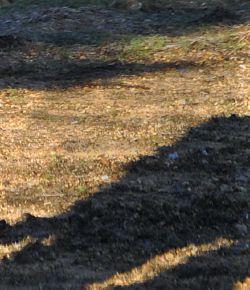
Visit the Elephant Discovery Center
Tuesday–Saturday 9 a.m.–4 p.m.
27 E. Main St. Hohenwald, TN 38462
elephant@elephants.com 931-796-6500
Watch the EleCams: elephants.com
Above: Billie was born in India in 1962 and spent more than 20 years performing in circuses across the U.S. She arrived at The Sanctuary in 2006 after a USDA confiscation.
older, and their owners think it is best for them to retire in peace. Some elephants need more social opportunities. Some were part of U.S. Department of Agriculture confiscations and find much better care where they are now. Regardless of the reason why, The Sanctuary helps with the transition process of bringing in the elephants using the most comfortable way for the animal.
“Osh was the largest elephant to arrive at The Sanctuary so far, standing at 11 feet tall,” said Joe Rizzo, the director of planning and sustainability at The Elephant Sanctuary. “He had a specialty crate for transport, and all together, the truck stood 14 feet tall. We had to have a permit for every county we crossed to get here.”
Once the elephants arrive, they find thousands of acres mimicking African and Asian habitats filled with heated barns, spring-fed lakes, pastures, woodlands, miles of internal elephant-proof fencing and other elephants. They also have access to all the forage they can eat. Elephants are herbivores, consuming around 300 pounds of plants every single day.

During the winter, the caretakers will help supplement that diet with hay, grains, fruits and vegetables.
“A lot of our elephants have a sweet tooth,” Roddy said. “Any day they get watermelon is a good day for everyone.”
How does waste turn into a resource?
The Elephant Sanctuary is in the business of making life better for elephants, but the organization is also making a great impact sustainability-wise for Lewis County and abroad.
“The Sanctuary goes beyond just championing eco-friendly practices,” said Janice Zeitlin, CEO and president of The Elephant Sanctuary. “It serves to align our broader mission with the well-being of our Tennessee neighbors and the world we share with elephants and all wildlife.”
The Sanctuary implements many organization-wide sustainability practices such as solar panels, composting food and waste, and, of course, recycling. In 2023, 89% of the waste produced from The Sanctuary was recycled, totaling to 133,829 pounds of cardboard, aluminum, steel, plastic, paper and glass. Catching rainwater across the habitat are 8,750-gallon cisterns, and that water is used to clean out the elephants’ barns.
“We look at everything that’s considered waste as a resource,” Rizzo said.
How is education the mission?
In 2019, the team at The Elephant Sanctuary decided they wanted to be able to share what they are doing with the public. While no visitor is allowed on the sanctuary grounds, anyone can now visit the Elephant Discovery Center on East Main Street in Hohenwald. Guests can walk into the center for hands-on self-guided exhibits and educational programming that explores more about elephants and the many ways they shape the world. The center’s Distance Learning Program hosts virtual field trips and is involved with hundreds of classrooms around the world.
“We love being able to educate people on elephants — both in human care and in the wild,” Roddy said. “We work to meet standards for each classroom and really just talk to them about what we’re doing here and the importance of sanctuary for elephants here and beyond.”
Among the tools used at the center, on virtual field trips and online are the EleCams. They are cameras mounted on towers in the middle of the habitats, and through fiber internet service provided by MLEC subsidiary
MLConnect, the cameras broadcast three different views of the elephant habitats to the rest of the world.
“It’s a great resource for our education programs because the elephants don’t see us watching them,” Rizzo said. “We get to observe them truly in their natural state.”
What’s next?
As The Elephant Sanctuary looks to the next 30 years, growth internationally and locally is in store. The plan is to continue helping elephants around the world in multiple continents and to expand facilities at both The Sanctuary and the Discovery Center to meet elephant and education needs. The team also has sights on increasing the footprint it leaves in the Lewis County community through more scholarships, classrooms, community clean-up days, enrichment days and more.
“It’s all about doing what’s best for elephants here and beyond,” Zeitlin said. “Now more than ever, though, we want to be connected with our community and show them the good we can do together.”




“The

sanctuary goes beyond just championing eco-friendly practices. It serves to align our broader mission with the well-being of our Tennessee neighbors and the world we share with elephants and all wildlife.”

— Janice Zeitlin, CEO and president, The Elephant Sanctuary


Top left, Joe Rizzo, Laura Roddy and Janice Zeitlin pose at the Elephant Discovery Center with an elephant puppet they use during community events. Bottom: Minnie and Ronnie, both born in Asia in 1966, spent years performing in circuses before being confiscated by the USDA. They arrived at The Sanctuary in 2006 and are often seen in the habitat together.
2025 Tennessee Agricultural Fairs
Anderson Co. Fair
Appalachian Fair (Washington Co.)
Bedford Co. Fair
Benton Co. Fair
Bledsoe Co. Fair
Carroll Co.
Cheatham Co.
Claiborne Co.
Cocke
Cumberland Co. Fair
Decatur Co. Fair
DeKalb Co. Fair
Delta Fair (Shelby Co.)
Dickson Co. Fair
Dyer Co. Fair
Fentress Co. Fair
Franklin Co. Fair
Gibson Co. Fair
Giles Co. Fair
Greene Co. Fair
Hamilton Co. Fair
Hardin Co. Fair
Henderson Co. Fair
Henry
Jamestown Winchester Trenton Pulaski
July 14-19
Aug. 18-23
July 14-19
Aug. 4-9
July 30-Aug. 3
Aug. 6-9
Sept. 4-6
Aug. 25-30
June 17-21
Aug. 12-16
Aug. 29-Sept. 6
Aug. 18-23
Aug. 20-23
June 23-28
Aug. 29-Sept. 7
Aug. 28-Sept. 1
Sept. 1-6
Aug. 18-23
TBD
Aug. 25-30
Aug. 4-9
July 21-26
Nov. 7-9
Sept. 15-20
Sept. 8-13
Aug. 8-16
TBD
Sept. 18-20
TBD
July 8-12
MILE S
Lauderdale Co. Fair
Lincoln Co. Fair
Macon Co. Fair
Maury Co. Fair
Meigs Co. Fair
Middle TN District Fair (Lawrence Co.)
Morgan Co. Fair
Obion Co. Fair
Overton Co. Fair
Polk Co. Fair
Putnam Co. Fair
Rhea Co. Fair
Robertson Co. Fair
Scott Co. Fair
Sequatchie Co. Fair
Sevier Co. Fair
Smith Co. Fair
South Central Area Fair (Lewis Co.)
Stewart Co. Fair
Sumner Co. Fair
Tennessee Valley Fair (Knox Co.)
The Nashville Fair
Trousdale Co. Fair
Van Buren Co. Fair
Warren Co. A&L Fair
Weakly Co. Fair
West TN State Fair
White Co. Fair
Williamson Co. Fair
Lafayette Columbia Decatur
Lawrenceburg
Wartburg
Union City
Livingston Benton Cookeville Evensville Springfield
Oneida
Dunlap
Sevierville Carthage
Hohenwald
Dover Gallatin
Knoxville
Nashville Hartsville
Spencer
Gleason
Wilson Co.-Tennessee State Fair Halls Fayetteville
McMinnville
Henderson Sparta
Sept. 10-13
Sept. 13-20
July 25-Aug. 2
Aug. 28-Sept. 1
Aug. 26-30
Sept. 18-27
July 22-26
Aug. 16-23
July 17-27
Aug. 18-23
July 31-Aug. 9
Aug. 5-9
Sept. 16-20
Aug. 30-Sept. 6
Aug. 14-16
Aug. 26-Sept. 1
June 30-July 5
Sept. 9-13
Sept. 25-27
TBD
Sept. 5-14
Sept. 5-14
Sept. 4-6
Oct. 20-25
Sept. 5-13
TBD
Oct. 16-25
Aug. 29-Sept. 6
Aug. 1-9
Aug. 14-23
JUNE 21–22
Tennessee Events
Festivals, celebrations and other happenings around the state
78th Annual Rhododendron Festival
Roan Mountain State Park. roanmountaincitizensclub@gmail.com or roanmountain.com/rhododendron-festival
The Rhododendron Festival, named after the woody shrub with colorful flowers, shown right, will take place June 21 and 22 at Roan Mountain State Park.
The festival includes over 100 vendors selling handmade arts
West Tennessee
JUNE 11–14
12th Annual Memphis Quartet Show
Cannon Center For The Performing Arts, Memphis. 901-568-2389 or quartetshow.com
JUNE 14
Rockabilly Highway Revival
Downtown Selmer. 731-645-6360 or facebook.com/rockabillyhighwayrevival
JUNE 14
Juneteenth
Discovery Park of America, Union City. 731-885-5455 or discoveryparkofamerica. com/event/juneteenth
JUNE 20
Shooting Hunger — West Tennessee
Carroll County Shooting Sports Park, Huntingdon. info@shootinghunger.com or shootinghunger.com
JULY 4–6
All-American Weekend
Graceland, Memphis. 877-777-0606 or graceland.com
and crafts, food vendors, traditional music performances and old-timey demonstrations.
The top of Roan Mountain is home to the world’s largest natural rhododendron gardens. Taking to some of the park’s hiking trails during the festival gives you the opportunity to experience the plant in full bloom.
The Rhododendron Festival is sponsored by the Roan Mountain Citizens Club, which has been putting together the event since the first festival in June 1947.
Middle Tennessee
JUNE 7–8
Lavender Festival
Oak Grove Lavender Farm and Event Center, Hohenwald. 931-295-8945 or oakgrovelavender.com
JUNE 14
39th Annual Dunlap Coke Ovens Bluegrass Festival
Dunlap Coke Ovens Amphitheater, Dunlap. 423-949-2156 or cokeovens.com
JUNE 14
Seventh Annual Blueberry Festival
Highland Realm Blueberry Farm, Hampshire. 931-215-8197 or facebook.com/HighlandRealm
JUNE 21
RC Cola — MoonPie Festival Bell Buckle. bellbucklechamber.com
JULY 3–4
Sewanee Fourth of July Celebration
Sewanee. sewanee4thofjuly.org

East
Tennessee
JUNE 13
Barn Dance
Museum of Appalachia, Clinton. 865-494-7680 or museumofappalachia.org
JUNE 20–21
Smoky Mountain Quilters of Tennessee 44th Quilt Show and Competition
Knoxville Expo Center. 865-213-2335 or smokymtnquilters.com
JUNE 27–28
Summer Arts and Crafts-O-Rama
Cumberland County Community Complex, Crossville. 931-337-9266
JULY 4
Independence Day Anvil Shoot Celebration
Museum of Appalachia, Clinton. 865-494-7680 or museumofappalachia.org
Visit tnmagazine.org to submit your events and view our complete events listing.
Photograph courtesy of the Rhododendron Festival.
Call for Entries
Shutterbug Showcase
In the next installment of our Shutterbug Photography Contest, e Tennessee Magazine is partnering with the Wilson County-Tennessee State Fair to highlight “95 Reasons to Celebrate Tennessee.” e topic is general, giving you plenty of room for creativity; we do want to know the town and county where each photo was taken.



SHUTTERBUG ASSIGNMENT
“95 Reasons to Celebrate Tennessee”
ere is much to celebrate across Tennessee, and we’d love to see each of the state’s 95 counties represented among the entries. e Tennessee Magazine will name rst-, secondand third-place winners as well as honorable mention recipients in each division — Shutterbug, Junior Shutterbug (ages 17 and younger) and Professional.

SUBMISSIONS — ONLINE ENTRIES ONLY
To enter, visit tnmagazine.org and click on “Entry Forms” under the “Contests” tab.
CONTEST RULES
1. The contest is open to amateur and professional photographers. For the purposes of this competition, you are considered a professional if you regularly sell your images or garner more than 50% of your income from photography.
2. Photographs must have been taken by you.
3. A photographer can enter no more than three photographs. There is no cost to enter.
4. All entries must be made online. We won’t accept prints for this contest. Sign on to tnmagazine.org and click on “Entry Forms” under “Contests.” Complete the form and upload your photograph(s).
DEADLINE
As a bonus this year, the fair will bestow additional honors upon entries highlighting the spotlighted agriculture commodity — pork. Go hog wild in exploring this additional theme. Images can include people or not, and they can be sel es. As you accept this challenge, please stay safe. We don’t want anyone to take a tumble in the name of the Shutterbug contest.
Entries must be entered online by the end of the day on Tuesday, July 15. Winners will be published in the September issue.
PRIZE PACKAGES
Judges will select a first-, second- and third-place winner in each age group. These prizes will be awarded: First place wins $150, second place $100 and third place $50.
5. Employees of Tennessee’s electric cooperatives and their immediate families are not eligible to win.
6. Please include the name of each recognizable person, if any other than yourself, in your photograph. It is the photographer’s responsibility to have the subject’s permission to enter his or her image in the contest. You must include the subject’s name and contact information with your submission. Omitting any of this information can result in disqualification.
7. By entering the contest, photographers automatically give The Tennessee Magazine and the Wilson County-Tennessee State Fair permission to publish the winning images in print and digital publications, to social media and on websites.
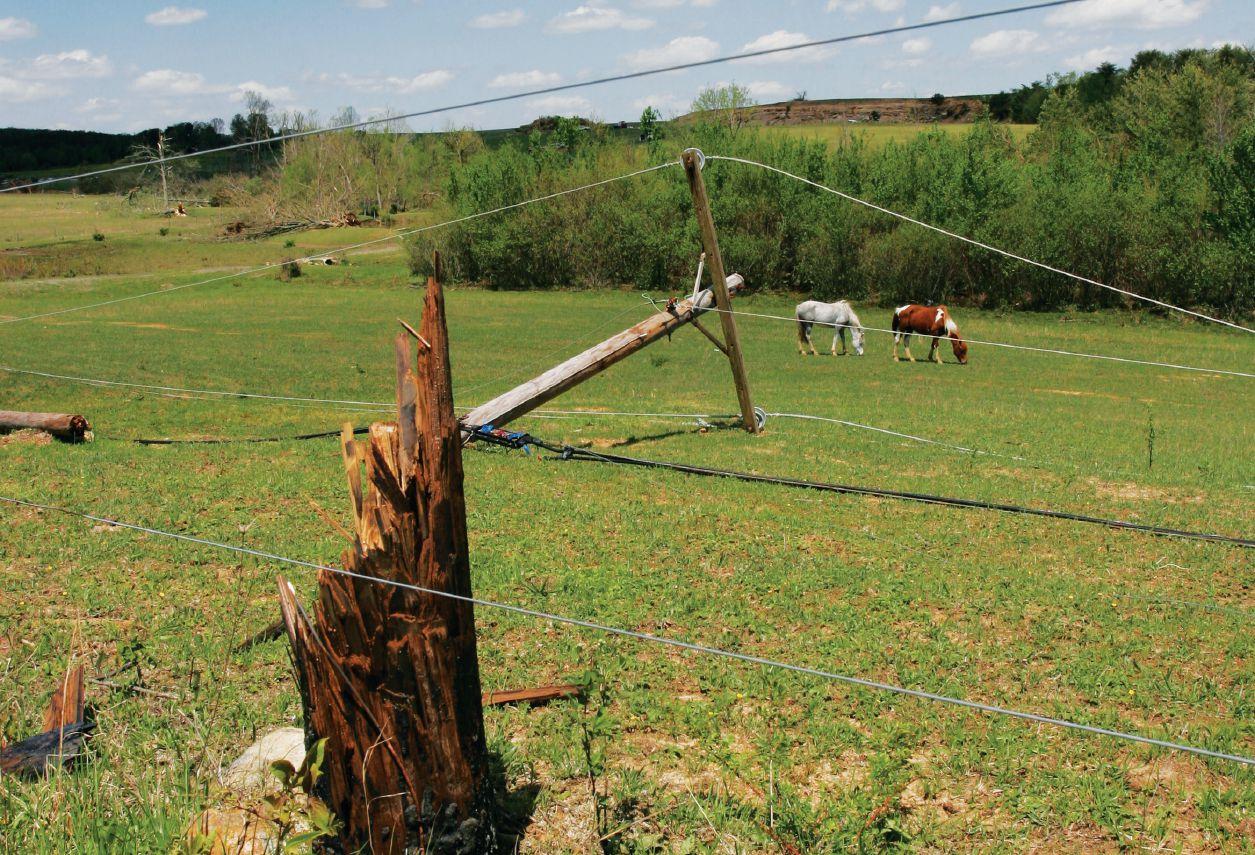
Downed power line safety tips
Power lines are part of everyday life. When you look up, they are there and likely have been providing essential electricity for your entire life. However, if you look down and see a power line — then there’s a problem. Here are five critical steps to keep you and your loved ones safe if you come across a downed power line:
Always assume. Always act as if a downed power line is live and dangerous. The line can still be energized even if you don’t see arcing, sparks or smoke or hear a buzzinglike sound.
Maintain distance. Keep at least 35 feet in between you and the line. You need to be even farther away if conditions around you are wet. Make sure others in your household are following these guidelines as well.
Don’t touch. If you are in a car when you encounter a downed power line, do not attempt to drive over it. Do not try to move the line with another object like a broomstick or tree branch either. Even materials that are typically nonconductive can conduct electricity if they are slightly wet.
Call 911. If severe weather causes power lines to fall on your property or nearby, call 911. As soon as your
local electric cooperative is notified, employees will take immediate action to de-energize the line. Until then, though, keep others, including pets, as far away as possible.
Be aware. Other nearby items like trees, cars, fences or even basketball hoops can become energized due to contact with a downed power line, meaning they could pose a threat to your safety. Keep a good amount of space in between you and these items to reduce your risk of electrical shock.
As always, if you have any questions or concerns about any power lines, call the helpful professionals at your local electric cooperative.
Energy efficiency myth-busting
“Don’t go outside with wet hair — you’ll catch a cold,” “Wait an hour after eating before swimming,” and “Coffee stunts your growth,” are all old wives’ tales you’ve likely heard throughout your life. Just like these common misconceptions, there are many you will come across when it comes to energy efficiency. Here are five myths to watch out for when it comes to saving money on your electric bill:
MYTH NO. 1: It’s more energyefficient to hand-wash your dishes instead of running your dishwasher. In most households, the dishwasher is more energy-efficient and uses less hot water than handwashing. Filling the average kitchen sink can take 4 to 6 gallons of water, depending on the size and depth of the sink bowl. A running kitchen sink can use 2 gallons of water per minute, depending on the faucet type. A standard Energy Star-rated
dishwasher uses around 3 to 4 gallons of water per cycle.
MYTH NO. 2: Running longer cycles on appliances will use more energy. Even though using a quick cycle mode means your dishwasher or washing machine will run for a shorter amount of time, this mode doesn’t actually save you energy or money. Instead of using these speed wash or speed dry cycles, wait until you have a full load of laundry or dishes to wash and dry. Today, most technologies use significantly less energy when they are running a full cycle.
MYTH NO. 3: Not adjusting your thermostat will save you money on your electric bill. We all have that family member who is adamant about the thermostat’s temperature staying the same. While they mean no harm, it is a good idea to adjust the temperature every now and then. If you are leaving to go on vacation,
bump up the thermostat a few degrees. This way, you aren’t wasting energy but are keeping appliances like your refrigerator cool.
MYTH NO. 4: Ceiling fans keep your home cool while you are away. Ceiling fans cool people, not rooms. They circulate room air but do not change the temperature. Running a ceiling fan when no one is home or in the room only adds to your electricity use cost.
MYTH NO. 5: Reducing energy use is too expensive. Many believe that reducing energy use requires expensive upfront costs like purchasing new appliances or construction upgrades to an older home. However, there are many things you can do without spending a fortune that will help lower your bill. Turning off lights when you aren’t in the room, sealing air leaks and unplugging devices when they aren’t in use can all reduce consumption.
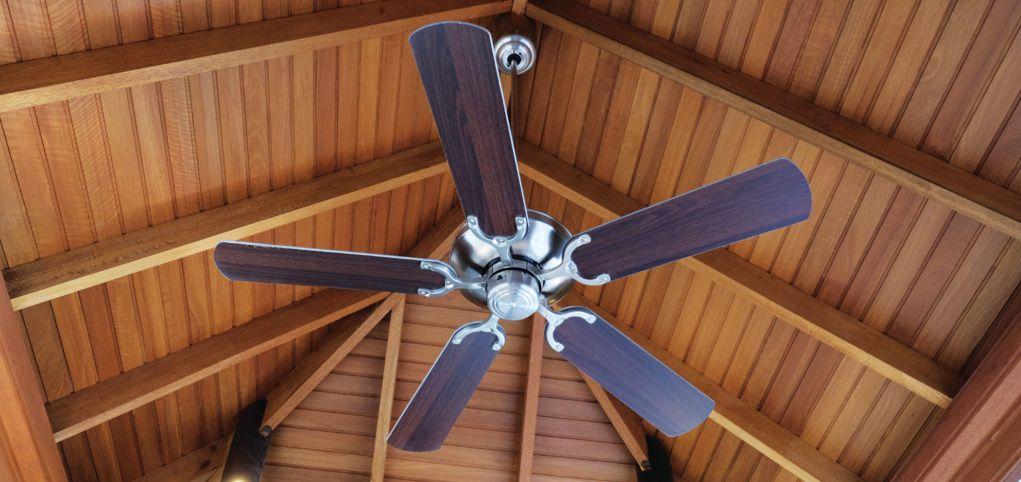
How extreme summer temps impact reliability
By Abby Berry
When outdoor temperatures soar, our electricity use increases. That’s because our air conditioners are running longer and more often to counteract sweltering outdoor temperatures. Factor in that we all tend to use electricity at the same times — in the morning and early evenings — and that equals a lot of strain on the electric grid.
The state’s electric cooperatives work closely with the Tennessee Valley Authority to ensure you have the power you need whenever you flip a switch, but the electric grid is much larger than your local co-op and TVA.
In summer months, when even more electricity is being used simultaneously across the country, it is possible for electricity demand to exceed supply, especially if a prolonged heat wave occurs. If this happens, which is rare, the grid operator for our region of the country might call on consumers to actively reduce their energy use or initiate rolling power outages to relieve pressure on the grid. Your local electric cooperative will
always keep you informed about situations like this.
Your electric cooperative works proactively with TVA to create a resilient portion of the grid and ensure electric reliability in extreme weather, including regular system maintenance, grid modernization efforts and disaster response planning, but it takes everyone to keep the grid reliable.
To help keep the air conditioner running for you, your family and neighbors, here are a few things you can do to relieve pressure on the grid during times of extreme summer heat:
Select the highest comfortable thermostat setting and turn it up several degrees whenever possible. Your cooling system must run longer to make up the difference between the thermostat temp and the outdoor temp. Pro tip: Seal air leaks around windows and exterior doors with caulk and weatherstripping. Air leaks and drafts force your cooling system to work harder than necessary.

Run major appliances such as dishwashers, ovens and dryers during off-peak hours when the demand for electricity is lower.
Use ceiling fans to make yourself feel a few degrees cooler. Remember, ceiling fans cool people (not rooms), so turn them o in unoccupied rooms. Pro tip: During summer months, set ceiling fan blades to rotate counterclockwise, which pushes cool air down for a windchill e ect.
Close blinds, curtains and shades during the hottest part of the day to block unwanted heat gain from sunlight. Pro tip: Consider blackout curtains with thermal backing or re ective lining to block heat and light.
Use smaller appliances such as slow cookers, air fryers and toaster ovens to cook meals. Pro tip: Studies have shown that air fryers use about half the amount of
TIPS TO AVOID ENERGY SCAMS
Some scammers will pose as utility workers or contractors affiliated with your electric utility by knocking on your door and claiming to be employed or hired by the company. They might claim they were hired to reset, repair, replace or inspect your electric meter or utility-related device. If a utility employee or authorized contractor needs access to your home, we will schedule an appointment in advance, and proper identification will be provided for your review.
electricity than a full-sized oven. Air fryers are smaller and use focused heat, which results in faster cooking times, less heat output and lower energy use.
As we face the challenges posed by soaring summer temperatures, understanding the impact on energy demand is crucial for maintaining a reliable power supply. By adopting energy conservation practices during periods of extreme heat, not only can you save money on your electric bills, but you can also contribute to the resilience of the grid, keeping our local communities cool and connected.
Abby Berry writes on consumer and cooperative affairs for the National Rural Electric Cooperative Association, the national trade association representing nearly 900 local electric cooperatives. From growing suburbs to remote farming communities, electric co-ops serve as engines of economic development for 42 million Americans across 56% of the nation’s landscape.
ENERGY EFFICIENCY TIP OF THE MONTH
Take advantage of the warmer weather to reduce home energy use. Avoid using your oven, and use a grill instead. Not only will cooking outdoors eliminate the energy used to power the oven or stove, but it will also avoid raising the temperature inside your home, reducing the need for additional air conditioning.
You can also avoid using the oven with tasty no-bake recipes. Get creative in the kitchen, and explore new ways to save energy!














Electric cooperative leaders discuss pressing issues with lawmakers in D.C.
Cooperative leaders from across the state of Tennessee traveled to Washington, D.C., on Sunday through Tuesday, April 27 through 29, to meet with members of the Tennessee congressional delegation as well as Sen. Marsha Blackburn and Sen. Bill Hagerty.
More than 50 electric co-op leaders from Tennessee traveled to Washington, D.C., to make these visits during the National Rural Electric Cooperative Association’s annual legislative conference — a time where electric cooperative leaders gather from around the country to hear from members of Congress and administrative officials and to discuss timely and pressing legislative issues affecting electric co-ops and their member-owners.
Lawmakers were encouraged to support broadband and other investments in rural infrastructure as well as other legislation that would reduce costs for electric co-ops and co-op consumers. Lawmakers were also invited to visit their local co-ops to meet
employees, attend annual meetings or tour co-op facilities.
“This is the only NRECA conference all year that provides the opportunity to hear from key government officials, then engage directly with your representatives in Congress,” said Ryan King, TECA’s vice president of government affairs.
“We were able to advocate for federal legislative and executive branch policies that benefit our electric cooperatives and our member-owners. With new leadership in the White House and Congress, this was a great chance to create new relationships while cementing the ones we’ve had through the years.”

Home Energy Q&A
By Brad Wagner

Slip into a comfortable summer and lower energy costs with these DIY tips
As energy demand continues to rise, finding ways to use less energy during peak times will ease the strain on the electric grid.
Q: A:
How can I get my home ready for the heat of the summer while keeping energy costs low?
Balancing comfort with cost is a concern for many of us who live in the Tennessee Valley. As spring settles into summer, June is the perfect time for a do-it-yourself home energy checkup. Here are 10 low- or no-cost ways to make sure that you — and your home — are ready to beat Tennessee’s heat.
1. Inspect your air conditioning unit
Visually inspect your outdoor A/C unit. Look for visible signs of wear, damage, corrosion or obstructions like debris or vegetation that could block airflow. Then, make sure it’s level and securely positioned. And don’t forget to replace your air filter at least every three months!
If you’d prefer to leave the tuneup to the pros, you can take advantage of a $50 HVAC tuneup rebate offered by TVA EnergyRight.
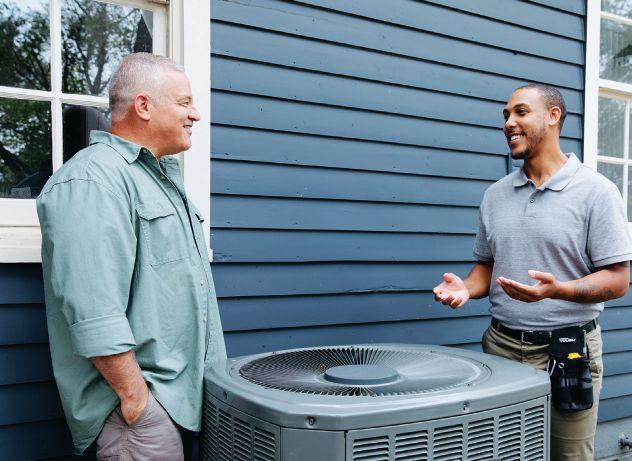
2. Seal air leaks
Keep all of your nicely conditioned air inside and summer swelter outside! Check the seal around all A/C window units, windows and doors to make sure hot air can’t get in. Use weather stripping or caulk, and install door sweeps as necessary.
3. Close your dampers
If you use a fireplace or woodstove throughout the winter, close your dampers at the end of your heating season; this will prevent cool air from going up in “smoke” and keep critters from creeping in.
4. Reverse your ceiling fan
Reverse the direction of your ceiling fans so the blades rotate counterclockwise, creating a cooling downdraft. Remember, though, that ceiling fans cool people, not rooms. There’s no need to keep ceiling or personal fans running in an empty room. Clean the blades before you reverse them, especially if pets live in your home.
5. Don’t let the sun shine in
We’re not talking blackout shades here, but closing your curtains and blinds strategically is well worth the effort. When you’re home, consider closing east-facing blinds in the morning and west-facing blinds in the afternoon. If you’re lucky enough to live in a home with lots of windows, get in the habit of closing all the curtains and blinds before you leave for the day.
6. Bump your thermostat up a few degrees
Did you know that for every degree above 72, you can save up to 3% on your energy bill? For maximum summer energy savings, aim for 78 degrees when you’re home. When you need
to cool the house down, dial it back a degree or two at a time until you’re comfortable. Dropping the temperature set point lower doesn’t make your A/C work faster, but it will make your system work harder for longer.
7. Consider purchasing a programmable or a smart thermostat
If you don’t already have a programmable or a smart thermostat, now’s the time. Most smart thermostats have an “eco” mode that’s ideal for extended periods away (like your annual summer vacation). They can also “learn” your habits and adjust the temperature automatically according to your routine. This helps ensure that your home stays comfortable while you’re in it and turns it into a money-saving machine while you’re away.
8. Fire up the grill!
Baking, roasting and cooking on your range can heat your kitchen quickly. Can’t stand the heat? Get out of the kitchen! Use your grill, air fryer, slow cooker or microwave on hot days to keep your home cooler. If you must
use the oven, try baking during the evening when outdoor temperatures are lower.
9. Cool your lights
Traditional incandescent bulbs produce more heat and use more energy than LEDs. By switching to LED bulbs, you’ll reduce heat buildup in your home and lower your electricity costs.
10. Take a free, DIY Home Energy Assessment

Explore the ins and outs of your home’s energy use by taking a free, online DIY Home Energy Assessment offered by TVA EnergyRight. By the end of your assessment, you’ll have learned more about how your home uses (and loses) energy. You’ll also gain access to an interactive dashboard with recommendations tailored to your home.

Brad Wagner is a programs operations manager at TVA EnergyRight, and he’s committed to helping people make informed decisions and lower their energy costs.
Story by Amber Weaver
by Kristine Michelsen
Behind the Bread











How a love of food and nourishment has led one family to breaking sourdough bread with the community and beyond
Flour, water, salt and sourdough starter. at’s it. ose four ingredients are what have allowed Chris and Sierra Adorno to not only stay at home and raise their children but also start their own business and bring real food to the community of Claiborne County. “Knowing that we can be at home and raise our family but also make a living while sharing our bread with our neighbors really is the best of both worlds,” Sierra Adorno said.
Baking basics
Adorno made her sourdough starter in 2014 and has fed it daily ever since, but her love for the kitchen began many years before that just as a little girl. “ ere wasn’t a holiday or an evening that I wasn’t invited into the kitchen to make something,” Adorno said. “Whether it was cookies with my mom, a full-blown dinner with my dad or a special holiday meal with my grandma. So needless to say, I grew up in the kitchen.”
Adorno’s baking basics remained with her and continued to grow as she did. When she met her husband and they were ready to start a family in Placer County, California, they decided they needed to pay closer attention to what they were putting into their own bodies as well as what they would be feeding their now three children.
“I started teaching myself about the di erences between yeast bread and sourdough fermentation,” Adorno
Photographs
Sierra Adorno loads her beloved bagels into a commercial oven inside her den.


said. “I played around in the kitchen with it, and it soon turned into making sourdough bread for my friends and family.”
Baking bread became a fun hobby that would soon turn into a ful lling venture.
A den turned into a bakery
Years went by, and in 2022, the Adorno family moved 2,458 miles from the West Coast to the couple of acres they now call home, served by Powell Valley Electric Cooperative in Claiborne County. e family of ve has chickens and a garden, but they had trouble nding the real bread in stores that they were used to enjoying. at’s when Adorno Sourdough was born.
“We soon realized that there was a demand for real food, and that coincided with my love for food and my love for feeding people,” Adorno said. “It has been this great journey of sharing what we love with our community, and it has been expanding ever since.”
e Adorno couple joined several farmers markets and soon found what they call “their people.” ose connections meant quickly expanding from baking about 12 loaves of bread for each market to 60 — all out of their residential oven that was having to run 24 hours every day.
“It was at that point where we decided to go all in, and we turned our den in our house into our bakery,” Adorno said.















Four wholesome ingredients
e loaves of bread the Adornos are baking really are made from four fresh simple ingredients: our, water, salt and sourdough starter. at’s a much shorter ingredient list compared to loaves you will nd on most grocery store shelves. While this sourdough bread’s shelf life is a fraction of what you would nd in the typical retail store, Adorno assures it is both good for your body and your mind.
“I’m a rm believer that our food is supposed to be a tool to nourish our body,” Adorno said.
Adorno Sourdough recommends consuming their bread and products three to six days from purchasing.
Top left: Sourdough bagels right out of the oven ready to make their way to happy customers. Bottom left: Adorno’s middle son, Miles, admires his parents’ work fresh from the oven. Above: A 2-pound sourdough round rests before scoring and baking.
Where to find Adorno Sourdough
RESTAURANTS:
Hangar 37 Coffee
New Tazewell
Porteous Acres
Middlesboro, Kentucky
RETAIL STORES:
Hillfolk
Cumberland Gap
Harrogate Plant and Produce
Harrogate
Whitt’s Place
Tazewell
Lively Iris
Sneedville
MARKETS:
Angelo’s Sip & Stroll
Cumberland Gap
Every third Wednesday of the month
The Cumberland Gap
Small Farmers Market
Cumberland Gap
Every rst Friday of the month through summer
FOOD TRUCK:
Adorno’s Breakfast & Burgers
Harrogate Plant and Produce
Every Wednesday 7 a.m. to 4 p.m. and various locations on weekends
Follow on Facebook and Instagram for updates.
While sourdough bread doesn’t mold very quickly, it does lose a lot of its moisture over time. Aside from timespan, sourdough bread is also a better option for those who experience gluten sensitivity, and it allows for enhanced nutrient absorption, blood sugar control and gut health support.
A growing family a air
While the mission statement of bringing real fresh bread to the community hasn’t changed, Adorno Sourdough has de nitely grown. e Adornos are easily making 125 to 175 loaves of sourdough bread in various avors and 400 sourdough bagels a week on top of sourdough cinnamon rolls, sourdough croutons, sourdough pizza crusts, sourdough granola and sourdough brioche buns. at’s all done in their 15-by15-foot den-turned-bakery with two commercial ovens, a commercial slicer and a commercial mixer. e products are found at local restaurants and stores across the region.
“It’s pretty awesome to look back and think that our capacity has expanded so much,” Adorno said. “We have been blessed to be able to turn this into a real bakery.” ankfully, the whole family is involved in this real bakery. e business now allows for both Sierra and Chris to stay at home, be with their children, and make and deliver bread together. Sierra’s mother helps with the farmers markets. Her father and brother help with their latest addition — Adorno’s Breakfast & Burgers food truck. ere you can get sourdough bagels for breakfast and burgers sourced from a local farm served on sourdough brioche buns for lunch.
“We had no idea we would ever end up doing this, but looking back,
it makes sense with our upbringing,” Adorno said. “It’s a real family business, and we’re all about sharing good, real food with people.”
Enjoying the present
Over a span of just three years, Adorno and her family have been able to share what real bread tastes like and the health bene ts of it with well over 5,000 people. She has even started hosting classes in their community to help empower others to be able to do this very concept themselves.
As for what’s next for the bakery, sights are set on continuing to share and break real bread with their community. One day the goal is to open a commercial location and storefront as they are producing as much as they can in their denturned-bakery. For now, though, they are content with what they have.
“We are really enjoying where we are at right now with being able to be present with our family while nding that happy medium of serving our community the way that works best for us,” Adorno said.
“I am so blessed to be able to say that we have been able to share real bread that has an abundance of health benefits with our neighbors.” — Sierra Adorno




Top left: Sourdough bagels fresh out of a water bath before heading to the oven. Top right: Adorno tops her cheddar sourdough bagels with jalapeños. Above: Sourdough bagels are placed into the oven.
History Lesson
by Bill Carey
Vanderbilt University retires its founder’s name
I’m aware that not everyone has connections to Vanderbilt University. But if you are interested in the Civil War, the Methodist Church or in Tennessee history, you will want to know the following:
Vanderbilt has begun to tear down McTyeire Hall, a two-story dormitory that was built in 1941. It was originally a girl’s dorm, but recent generations remember McTyeire as an international hall. I lived in McTyeire Hall when I was a junior in college, and my friends expressed sorrow on social media when Vanderbilt announced its fate.
The reason I think this is of interest to people who did not go to Vanderbilt is because the school says it has no plans to name anything else after Bishop Holland McTyeire. The reason that is interesting is that I consider McTyeire to have been the founder of the university.
Vanderbilt has not said why it has no plans to name something else after McTyeire. But I suspect it’s because of his association with the Confederacy — something I wrote about extensively in my 2003 book Chancellors, Commodores and Coeds: A History of Vanderbilt University.


When the Civil War broke out, McTyeire was editor of a Southern Methodist newspaper produced in Nashville called the Christian Advocate. The Methodist Episcopal Church, South (its official name) was very pro-Confederate, as was its newspaper.
In numerous editorials and sermons, McTyeire defended slavery as an institution, using arguments that were racist (certainly by today’s standards). McTyeire also was a slaveholder himself. For many professors and students, these things alone explain why Vanderbilt should not name anything else after him.
However, when I wrote the Vanderbilt book, I was more interested in McTyeire’s war editorials because they had never been written about in a book before.
In April 1861, Confederate forces fired on Fort Sumter, and President Lincoln raised a 75,000-man army to defeat the rebellious Southerners. If you think that the Methodist newspaper advised its readers to remain calm, you would be wrong. In an editorial almost certainly written by McTyeire, the paper advised its readers to prepare for a war in which God would be on the side of the South.
Here are some excerpts:
“We must meet the issue now and quit ourselves like men or be slaves hereafter. We must fight for our altars and firesides — fight, that is the word. ... Witness the readiness with which
The Tennessee History Guy
McTyeire Hall, on the campus of Vanderbilt University Bill Carey photo
Ohio and Pennsylvania and Indiana and Illinois equip regiments and put them at the service of the Black Republican party, to overrun and subjugate the South.”
“Send your gun to the blacksmith and have it fixed. Pray God there may be no occasion to use it; but there may be occasion. ... He than hath no sword, let him sell his garment and buy one.”
“The North has a large population of worthless population to spare — food for powder. As a people they are by nature more cute than brave; and by profession more skilled in getting up wooden nutmegs and in handling arms. But we must not be deceived. The venom of abolitionism will make even a coward strike. ... Defending our own soil and institutions, one true Southern man can chase a dozen Yankees.”
We will never know how many Southerners believed McTyeire’s editorial and enlisted in the Confederate Army, never to return home. We do know that when the U.S. Army invaded Nashville 10 months after this column was published, McTyeire fled to rural Alabama, where he remained until after the war. A year after the Civil War ended, he was ordained as a bishop in the Methodist Episcopal Church, South.
Around 1870, there was a movement in the Southern Methodist Church to start an institution of higher learning supported by the entire denomination — rather than just by the denominations in individual states. McTyeire was one of leaders in this movement, which succeeded in getting an organization chartered under the name “Central University.” For about a year, it existed in name only.
Central University would have never been built were it not for a fortuitous family connection. Bishop
McTyeire’s wife, Amelia, was a cousin of the second wife of Cornelius Vanderbilt — one of the wealthiest men in America. In 1873, Holland McTyeire went to New York City to see a doctor about a health problem. While there, he stayed with his wife’s cousin and her rich husband (who was 43 years older than his second wife!).
One night, McTyeire talked Vanderbilt into giving $500,000 to the university he hoped to start. (I’m sure that Cornelius Vanderbilt — a Union man to the core — never read the editorials McTyeire wrote when the Civil War broke out.) Vanderbilt agreed, under several conditions: first, that McTyeire be named president of the school’s board of trust; second, that Vanderbilt approve the plans for campus construction; and third, that it be “in or near” Nashville. Vanderbilt never asked that Central University be named for him. But a few weeks later, the trustees, led by McTyeire, rechristened it Vanderbilt University.
Cornelius Vanderbilt later raised his donation to $1 million. He never visited the institution named for him and died in 1877.
Holland McTyeire picked the location of the Vanderbilt campus, supervised the construction of its original buildings, picked its first chancellor and hired the school’s first professors. He also lived on the Vanderbilt campus for the rest of his life. When McTyeire died in 1889, a Chattanooga Daily Times front-page headline referred to him as the “Greatest Southern Methodist.” He was buried on campus, near the divinity school. Times have changed. Private universities are not always as comfortable with their histories as they used to be.
When I was a student, there was a dorm on the Peabody part of the Vanderbilt campus called Confeder-
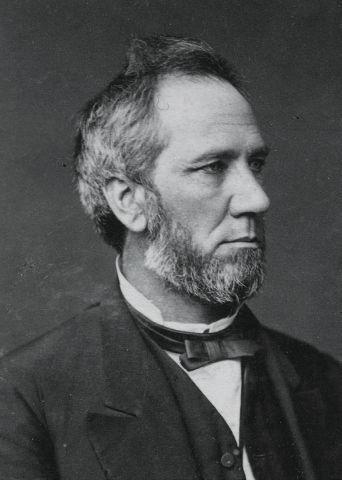
ate Hall. To summarize a long story, the school changed the dorm’s name to “Memorial Hall” in 2005 and, 11 years later, reimbursed the Daughters of the Confederacy for the donation that helped fund the dorm’s construction in the first place.
Over the years, I’ve wondered about the fate of McTyeire’s name.
Since I wrote a book about my alma mater’s history, you might ask my opinion. I think Vanderbilt should still name some building or part of its campus after its founder. But it should also put up an historic marker explaining McTyeire’s connections to the Methodist Church, slavery, the Confederacy and the university.
It bothers me that almost no Vanderbilt students know anything about why the school exists. People should also learn the difficult parts of our history. It’s only by doing so that we understand why events such as the Civil War occurred and why hundreds of thousands of Southerners went off to die convinced that God was on their side.
Holland McTyeire
United Methodist House collection

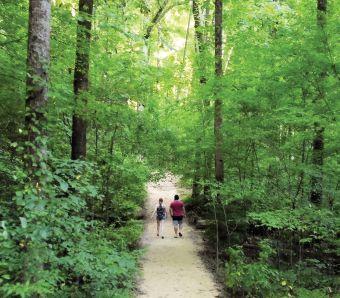

Rugged Beauty
North Chickamauga Creek Gorge State Park a natural paradise
Story by Trish Milburn | Photographs by David Cox
North Chickamauga Creek Gorge
State Park gets its name from the deep gorge that water and time have carved into the sandstone of Walden’s Ridge. In and rising up from this 10mile gorge are a lovely cornucopia of old-growth forest, critters large and small, and 10 threatened or endangered species such as the federally endangered Virginia spiraea, a flowering plant from the rose family that has groups of tightly packed small white flowers.
North Chickamauga Creek Gorge might still be in its infancy as a state
park, but it’s been a favorite destination for outdoor lovers since it was designated a state natural area in 1999. Previously managed by the Justin P. Wilson Cumberland Trail State Park, the area’s visitation levels were such that it made sense to make it a state park unto itself. It achieved this designation in September of last year, allowing the just over 6,000 acres of wilderness in Hamilton and Sequatchie counties to benefit from their own budget and staff.
The head of that staff, Park Manager Josh Kuykendall, isn’t new to the area,
however. Prior to North Chickamauga Creek Gorge becoming a state park, Kuykendall was the assistant manager at Cumberland Trail and focused on the southern part of that park, which encompassed the land that became Tennessee’s 59th state park. He’s looking forward to making improvements that will serve both the public and the varied species and landscape that need protecting.
Among the most immediate issues that need to be addressed is the parking situation. Especially on weekends, the limited parking fills up quickly.

TENNESSEE STATE PARKS | TRAVEL
In fact, the rst thing you see when you visit the park’s website is a popup window that alerts visitors to the limited parking and suggestions for nonpeak times to visit. Also of note is that there are no bathroom facilities.
“Work on improved parking is supposed to start later this year,” Kuykendall says. “ ings like programming and a visitors center will come later. We are just now starting conversations about the visitors center.”
Even though North Chickamauga Creek Gorge does not yet have the amenities travelers can nd at many other state parks, there is still a wealth of enjoyable recreational opportunities available.
Hiking and swimming
One of the most popular attractions is Blue Hole, a swimming hole that requires a 1-mile hike over rugged terrain — including a creek crossing with no bridge — to access. Visitors should leave at least 30 minutes to hike back out to ensure being able to exit before the park closes each day.
e Blue Hole Trail is not the only one with water crossings. In fact, the 1.5-mile Hogskin Loop Trail has two during wet weather conditions. A portion of this trail runs concurrent to the long-distance Cumberland Trail.
Speaking of the Cumberland Trail, 10 miles of its nearly 200 completed miles sit inside North Chickamauga Creek Gorge State Park. (When completed, the Cumberland Trail will stretch more than 300 miles from Cumberland Gap to the Tennessee River Gorge near Chattanooga.)
Finally, there is the Flipper Bend Trail, which actually has three di erent hiking options: the 1.4-mile Clear Branch Loop, the 2 miles of the Flipper Bend Trail and the 4-mile Flipper Bend Loop. Taken together, these are known to visitors as the Lollipop Loop. is set of trails is also open to mountain bikes, the only area of the park where they are allowed.
Fishing
ere are lots of lovely shing spots throughout the park where you can try your hand at catching smallmouth bass, redeye, sun sh or the annually stocked rainbow trout.
Paddling and rock climbing
For the more adventurous — and experienced — the park o ers the adrenaline rush of whitewater canoeing and kayaking as well as rock climbing.
e park’s website has information on the put-in and take-out points

for personal paddlecra as well as safety information. Streams have the potential to reach Class V whitewater, which means that you must have an advanced level of experience to attempt to navigate the park’s waters. Pay attention to the park’s water level ag system for current conditions. Likewise, those who want to rock climb in the park should be experienced in the sport.
Camping
Only backcountry camping is available within the park, but you would be hard pressed to nd prettier spots to enjoy Tennessee’s natural wonders. ree primitive campsites — Stevenson Branch, North Chickamauga and Cooper Creek — require hiking in, and you need to plan your trip so that you arrive at the campsites before dark. Nightly rates to rent the sites vary based on date and availability.
It’s obvious that what Kuykendall wants visitors to know — that the park o ers more than the famous Blue Hole — is abundantly true.
“One of the coolest things about the park is that it’s a true wilderness only 20 minutes from Chattanooga,” he says. “ e habitats, viewsheds and watersheds are pretty remarkable.”
North Chickamauga Creek Gorge State Park
For more information, visit the park’s website at tnstateparks.com/parks/ north-chickamauga or call 423-708-8313.







Go Time!






Cornbread Cutouts
Recipes by Tammy Algood | Food styling by Cynthia Kent | Photographs by Robin Conover
It’s June. That means it’s time to get busy enjoying your life. You’ll have places to go and things to do. Why not try some of these recipes that are fun to make and play nicely with lots of other warm weather dishes? Best of all: ey travel well. It’s gorgeous outside … so get packing!
Salty Peanut Squares
Yield: 36 squares
• 1½ cups all-purpose flour
• 2 egg yolks
• cup firmly packed light brown sugar
• ¾ cup (1½ sticks) unsalted butter, softened, divided
• 3 teaspoons pure vanilla extract, divided
• ½ teaspoon salt
• ½ teaspoon baking powder
• ¼ teaspoon baking soda
• 3 cups miniature marshmallows
• cup corn syrup
• 1 (12-ounce) package peanut butter chips
• 2 cups salted peanuts
• 2 cups crispy rice cereal
Preheat the oven to 350 degrees. Lightly grease a 13-by-9-inch baking pan with oured cooking spray and set aside.
In a mixing bowl, combine the our, egg yolks, brown sugar, ½ cup of the butter, 1 teaspoon of the extract, salt, baking powder and baking soda at low speed until crumbly. Transfer to the prepared baking pan and press rmly in the bottom.
Bake 13 to 14 minutes or until lightly golden. Remove from the oven and immediately sprinkle evenly with the marshmallows. Return to the oven for no more than 2 minutes or until the marshmallows begin to pu . Transfer to a wire rack to cool.
In a large saucepan over medium heat place the remaining butter, remaining extract, corn syrup and peanut butter chips. Stir just until the mixture is completely melted and smooth. Remove from the heat and quickly stir in the peanuts and cereal. Evenly spoon over the marshmallowtopped crust, spreading as necessary. Transfer to the refrigerator to set before cutting into squares.
Cheddar Olive Rounds
My mother used to make these when ladies came over to play bridge. ey are worth resurrecting!
Yield: 8 to 10 servings
• 1 cup coarsely shredded
cheddar cheese
• ½ cup all-purpose flour
• ⅛ teaspoon cayenne
• ⅛ teaspoon white pepper
• 2 tablespoons unsalted butter, softened
• 20 small olives stuffed with pimentos, drained and patted dry
Place a piece of parchment paper on a large rimmed baking sheet and set aside.
In a medium bowl, stir together the cheese, our, cayenne and pepper. With your ngers, mash in the butter until a dough forms. Drop tablespoons onto the parchment paper. Place an olive in the center of each, and with lightly oured hands, wrap the dough completely around each olive. Repeat with all the olives and dough.
Cover with plastic wrap and refrigerate for 1 hour or up to 2 hours. When ready to bake, allow to come to room temperature uncovered while preheating the oven to 400 degrees. Bake in the middle of the oven for 14-15 minutes or until golden brown. Cool 5 minutes before serving.
Cornbread Cutouts
Top with pepperoni slices, cheese, shaved ham or turkey, or a dollop of chutney!
Yield: 24 rounds
• 2 cups self-rising cornmeal
• ¼ cup vegetable oil
• 1¾ cups buttermilk
• 1 egg
Preheat the oven to 400 degrees. Grease a rimmed 15-by-10-inch baking sheet and set aside.
In a mixing bowl, stir together the cornmeal, oil, buttermilk and egg. Stir until just blended. Transfer to the prepared baking and smooth evenly.
Bake 20 minutes or until rm. Cool on a wire rack. With a small cookie cutter, cut 24 pieces. Save the scraps for another use. Use or transfer to an airtight container.
Shrimp and Watermelon Ragout
Yield: 6 servings
• cup seeded diced watermelon
• ½ cup orange juice
• cup mandarin oranges, slices halved
• ¼ cup lime juice
• 2 tablespoons finely chopped sweet onion
• 2 teaspoons minced jalapeno pepper
• ½ teaspoon finely grated fresh ginger
• ½ teaspoon salt
• ¾ pound small cooked, peeled and deveined shrimp
• Freshly minced cilantro for garnish
In a mixing bowl, stir together the watermelon, orange juice, mandarin oranges, lime juice, onions, peppers, ginger and salt. Stir in the shrimp, cover and refrigerate at least 1 hour before serving cold or at room temperature. Garnish with cilantro before serving.
Mint Sugared Fruit Salad
Just like green salads, resist the temptation to include every fruit that’s available. Keeping it simple is the key recipe success. is recipe is from my grandmother.
Yield: 6-8 servings
• ¼ cup loosely packed fresh mint leaves
• 3 tablespoons sugar
• 1½ cups capped and quartered fresh strawberries, pitted sweet cherries or fresh raspberries
• 1½ cups seedless green grapes, halved
• 4 medium peaches, peeled, pitted and cut into large chunks
Place the mint in a small canning jar and sprinkle with the sugar. Cover and allow to sit at room temperature for at least 1 hour, shaking the jar every 20 minutes. Transfer to a food processor and process until nely ground.
Place the berries or cherries, grapes and peaches in a shallow bowl and mix. Sprinkle evenly with the mint sugar and toss to coat. Cover and let stand until ready to serve.
Picnic Perfect Ham Salad
e best make-ahead spread!
Yield: 3¾ cups
• 3 cups cooked ham, cut in chunks or large pieces
• ¼ cup Durkee’s Famous Sauce or honey mustard
• ¼ cup chutney
• 2 tablespoons mayonnaise
• 2 tablespoons unsalted butter, softened
• ¼ teaspoon black pepper
Tips& Tricks
All of these recipes are easily transportable with only half needing to go into the cooler (Ragout, Fruit Salad and Ham Salad).
Durkee’s Famous Sauce that is called for in the ham salad is found in the same area of the supermarket as mustard and mayonnaise. It has a distinctive light blue label and lid.
For convenience, cut the Salty Peanut Squares ahead of time, but leave them in the baking dish.
Place the ham in the bowl of a food processor and pulse until nely chopped. Transfer to a mixing bowl. Add the mustard, chutney, mayonnaise and butter to the food processor and process until smooth. Stir into the ham, blending well and sprinkle with the pepper. Cover and refrigerate at least 30 minutes before serving or up to 2 days prior to use.
Tammy Algood develops recipes for The Tennessee Magazine that feature farm-fresh Tennessee food. Those fresh, local ingredients will always add cleaner, more flavorful foods to your table. We recommend visiting local farms and farmers markets to find the freshest seasonal produce.

Ask Chef Tammy
The le over scraps from the Cornbread Cutouts make a marvelous addition to a glass of either milk or buttermilk!
You’ll find multiple other uses for the mint sugar made for the fruit salad. Utilize it in tea, lemonade and cocktails.
Looking for more recipes to welcome the warm days of summer? Browse our recipe archives or search for specific ingredients at tnmagazine.org/food.
Laurel of Hot Springs asks, “I am always nervous about leaving my slow cooker on during the day while I am at work. Is it OK to leave it on?”
Laurel, yes it is perfectly ne. ink of it this way: Do you unplug your refrigerator when you leave for work? Of course not, and it uses 10 times more electricity per hour than a slow cooker. Relax, and enjoy the convenience.
Billy writes, “What’s the rubber that makes up a rubber spatula? Just curious!”
Billy, many call it silicone, but it is correctly called polysiloxane. It was developed in the U.S. during the 1940s and was originally used in seals for refrigerators. e exibility and durability soon led to it being used as a kitchen utensil that is now invaluable.
Email your cooking questions to Tammy Algood: talgood@tnelectric.org.
Shrimp and Watermelon Ragout
Marketplace
Products and services from our neighbors in Tennessee and across the country




Community Corner
– What our neighbors are up to –
Find the Tennessee Flag
We have hidden somewhere in this magazine the icon from the Tennessee ag like the one pictured above. It could be larger or smaller than this, and it could be in black and white or any color. If you nd it, send us a postcard or email with the page number where it’s located. Include your name, mailing

address, phone number, email address and electric cooperative. One entry per person. ree winners will be chosen from a random drawing, and each will receive $20.
by Tuesday, July 1. Winners will be published in the August issue of e Tennessee Magazine
April flag spotters

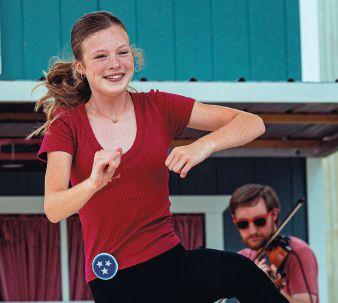
Note that the icon we hide will not be on an actual ag or historical marker, will not appear on pages 20-25 and will not be placed in any ads. is month’s ag will not appear on this page (that would just be too easy). Good luck!
Send postcards only (no phone calls, please) to: e Tennessee Magazine, Find the Flag, P.O. Box 100912, Nashville, TN 37224. Or you can ll out the form at tnmagazine.org/ ag or email ag@tnelectric.org. Entries must be postmarked or received via email
anks for the postcards and emails again this month identifying the location of the ag, le , which was found on the dancer’s button on page 14.
Winners are drawn randomly from each month’s entries. March’s lucky ag spotters are:
Ada C. Sparkman
Pickwick Dam, Pickwick EC
June Mills
College Grove, Middle Tennessee Electric Dean Virnig Pikeville, Sequachee Valley EC
Artist’s Palette Assignment for August
Three age categories:
8 and younger, 9 to 13 and 14 to 18 years old. Each group will have first-, second- and third-place winners.
Media:
Drawing or painting on 8½-by-11-inch unlined paper, canvas or board. We encourage the use of color. Please follow these size guidelines. Oversized canvas entries are especially difficult to handle and cannot be returned. Framed pieces will not be accepted.
Entry:
Send your original art to: The Tennessee Magazine, Artist’s Palette — August, P.O. Box 100912, Nashville, TN 37224. (Please make sure you include the month on the outside of the envelope!) Only one entry per artist, please.
Deadline:
Art must be postmarked by Tuesday, July 1.
Include:
Your name (legibly, please!), age, mailing address, phone number, email address and electric cooperative. Leaving anything out will result in disqualification.
Please note: By entering, you give The Tennessee Magazine permission to publish your work in print, online and via social media.
Artwork will not be returned unless you include a self-addressed, stamped envelope (SASE) with your submission. Only the U.S. Postal Service will be used for returns. For best reproduction results, do not fold artwork.
Each entry needs its own SASE, please.
Siblings must enter separately with their own envelopes.
Attention, teachers:
You may send multiple entries in one envelope along with one SASE with sufficient postage.
Winners will be published in the August issue of The Tennessee Magazine.
First place wins $50, second place wins $30 and third place wins $20. Winners are eligible to enter again after three months. Winners will receive their awards, artwork and certificates of placement within six to eight weeks of publication.
April’s flag location
Artist’s Palette June Winners
14–18 AGE GROUP WINNERS

FIRST PLACE: Carolynn Roundy, 17, Cumberland EMC


SECOND PLACE: Addilyn Gray, 15, Powell Valley EC

THIRD PLACE: Maya Wojakiewicz, 15, Fort Loudoun EC
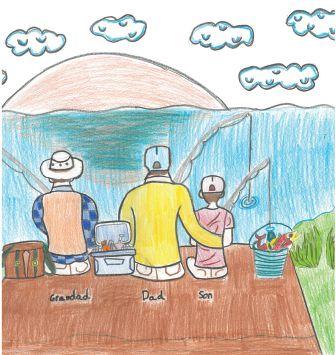

FIRST PLACE: Sophia Smith, 12, Upper Cumberland EMC
SECOND PLACE: Owen Ahearn, 12, Cumberland EMC 9–13


PLACE: Mila Jolley, 13, Caney Fork EC

THIRD
FIRST PLACE: Aarna Shri Kadimisetty, 7, Middle Tennessee Electric
THIRD PLACE: Vada-Liv Woodlee, 8, Sequachee Valley EC
SECOND PLACE: Emma Shultz, 8, Holston EC
Point of View
by Robin Conover

“The mountains are calling and I must go.”
– John Muir
Weather is a constant variable for nature photographers. I’ve experienced unexpected downpours, high winds, thunderstorms and subfreezing temperatures that have all changed the outcomes of photo shoots.
Unlike baseball, however, a downpour might not cancel the entire day. But it can definitely change your plans quickly, bringing unplanned opportunities.
I recently visited the Gatlinburg area of the Great Smoky Mountains National Park to lead a photography workshop. The hands-on assignment for the day, to photograph the Middle
Prong of the Little Pigeon River, got rained out.
We punted on the workshop that afternoon, but radar indicated that the storm might clear by late afternoon and early evening. Hoping for a parting of the clouds around sunset, I drove up the Newfound Gap mountain pass road. At the top, where the states of North Carolina and Tennessee meet, the clouds were socked in so thick I couldn’t see from one end of the parking lot to the other. Continuing up to Kuwohi, formerly known as Clingmans Dome, the clouds were even thicker.
I stayed until almost sunset, and the clouds didn’t lift. On the drive up, I had seen some fog wafting through the valley below the Morton Overlook parking area.
I decided to cut my losses and head back down the mountain. Won-
dering if this day was going to be a total bust for any photography, I was blessed to find this scene at Morton Overlook. I watched the fog and clouds dance in the valley below for about 15 minutes until darkness fell across the landscape.
The rising fog undulated and wafted along with the air currents, silhouetting the trees beautifully. It was as if nature performed a symphony for my eyes while the sounds of rushing water and calling birds faded with the daylight into the night.
To find out more about the Great Smoky Mountains National Park, check out nps.gov/grsm/ index.htm.
“Smoky Mountains After the Rain” Canon EOS 5D Mark IV, EF 28-300mm ƒ3.5-5.6L IS USM at 100mm, ISO 100, ƒ3.5-5.6 at 1 second, Gitzo tripod

‘95 Reasons to Celebrate Tennessee’
We’ve partnered with the Wilson CountyTennessee State Fair again this year for one of our Shutterbug Photography Contests. Send us your best photos that capture the fair’s theme. Find contest guidelines and entry details on page 19 and online at tnmagazine.org .

